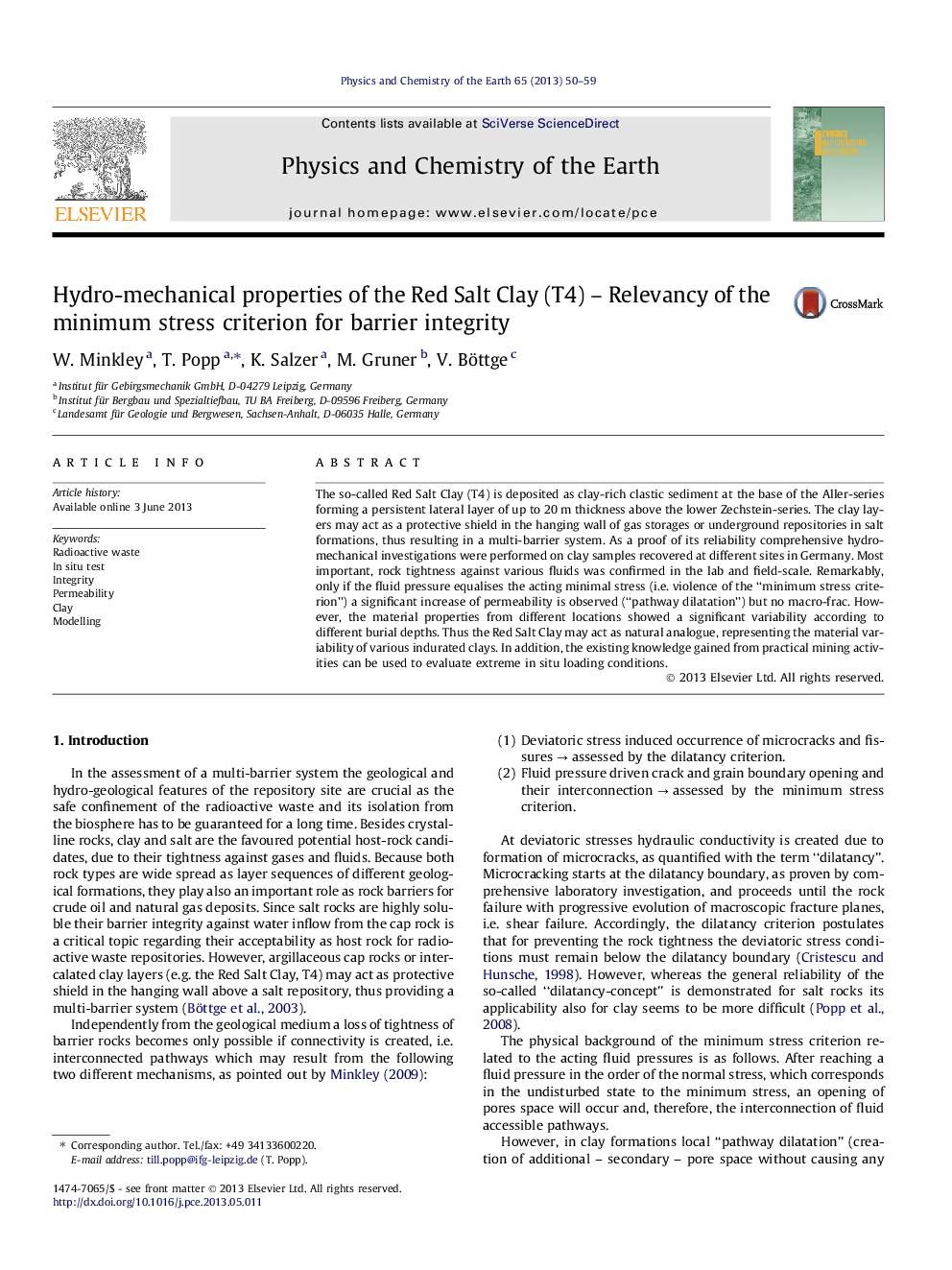| Article ID | Journal | Published Year | Pages | File Type |
|---|---|---|---|---|
| 4721008 | Physics and Chemistry of the Earth, Parts A/B/C | 2013 | 10 Pages |
Abstract
The so-called Red Salt Clay (T4) is deposited as clay-rich clastic sediment at the base of the Aller-series forming a persistent lateral layer of up to 20Â m thickness above the lower Zechstein-series. The clay layers may act as a protective shield in the hanging wall of gas storages or underground repositories in salt formations, thus resulting in a multi-barrier system. As a proof of its reliability comprehensive hydro-mechanical investigations were performed on clay samples recovered at different sites in Germany. Most important, rock tightness against various fluids was confirmed in the lab and field-scale. Remarkably, only if the fluid pressure equalises the acting minimal stress (i.e. violence of the “minimum stress criterion”) a significant increase of permeability is observed (“pathway dilatation”) but no macro-frac. However, the material properties from different locations showed a significant variability according to different burial depths. Thus the Red Salt Clay may act as natural analogue, representing the material variability of various indurated clays. In addition, the existing knowledge gained from practical mining activities can be used to evaluate extreme in situ loading conditions.
Related Topics
Physical Sciences and Engineering
Earth and Planetary Sciences
Geochemistry and Petrology
Authors
W. Minkley, T. Popp, K. Salzer, M. Gruner, V. Böttge,
